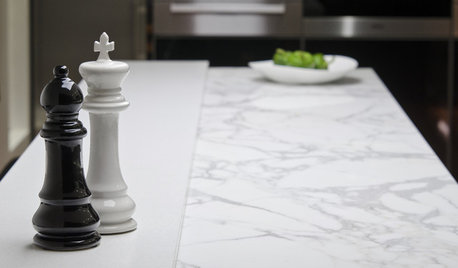High Lead Levels
User
9 years ago
Related Stories

HEALTHY HOMEGet the Lead Out: Lead Safety at Home
Keep your family safe by properly testing for and dealing with lead in old painted surfaces, water and soil
Full Story
HOUZZ TOURSHouzz Tour: High-End Modernism in a Jet-Set Town
Expansive glass highlights the mountains in this four-level architect's home, while stone and wood bring nature up close
Full Story
HOUZZ TOURSMy Houzz: Less Room Leads to Creative Chic in Manhattan
It may be tiny, but this studio in a coveted location shows high design, savvy reuse and an artistic sensibility
Full Story
MOST POPULARHow High Should You Mount Your TV?
Today we look at an important question to consider when locating your television: How high should you set it?
Full Story
DREAM SPACESA Car Lover's Man Cave Kicks Into High-Luxury Gear
Fast cars, fine wines and a high-tech bathroom elevate this backyard outpost to the realm of dream space
Full Story
HOUZZ TOURSMy Houzz: High End Meets Budget Friendly in Toronto
Splurging selectively and saving elsewhere, a Canadian family gets a posh-looking home that matches their vision
Full Story
CONTEMPORARY HOMESHouzz Tour: Manhattan Penthouse Is High on Style
Blackened steel, glass, teak and a color-shifting staircase make this home a contemporary feast for the eyes
Full Story
KITCHEN COUNTERTOPSKitchen Counters: High-Tech Solid Surfaces Make Maintenance Easy
Sculpted by heat and nonporous by nature, solid-surface countertops bring imagination and low maintenance to the kitchen
Full Story
BEDROOMSDressed-Up Headboards Ride High in Bedrooms
In ensembles with artwork, found objects and original wall treatments, headboards get their rightful share of attention
Full Story
STUDIOS AND WORKSHOPSRoom of the Day: A Former Garage Hits a High Note
Remodeling turns a hodgepodge storage space into a welcoming music room — just in time for a family wedding
Full StoryMore Discussions









Kimmsr
nil13
Related Professionals
Ashburn Landscape Architects & Landscape Designers · Jennings Landscape Architects & Landscape Designers · Oconomowoc Landscape Architects & Landscape Designers · Bethlehem Landscape Contractors · Bell Gardens Landscape Contractors · Cary Landscape Contractors · El Segundo Landscape Contractors · Leicester Landscape Contractors · Middletown Landscape Contractors · Whitehall Landscape Contractors · Clearfield Landscape Contractors · Greendale Decks, Patios & Outdoor Enclosures · Miami Decks, Patios & Outdoor Enclosures · Parker Decks, Patios & Outdoor Enclosures · Renton Decks, Patios & Outdoor Enclosuressylviatexas1
gardengal48 (PNW Z8/9)
UserOriginal Author
toxcrusadr